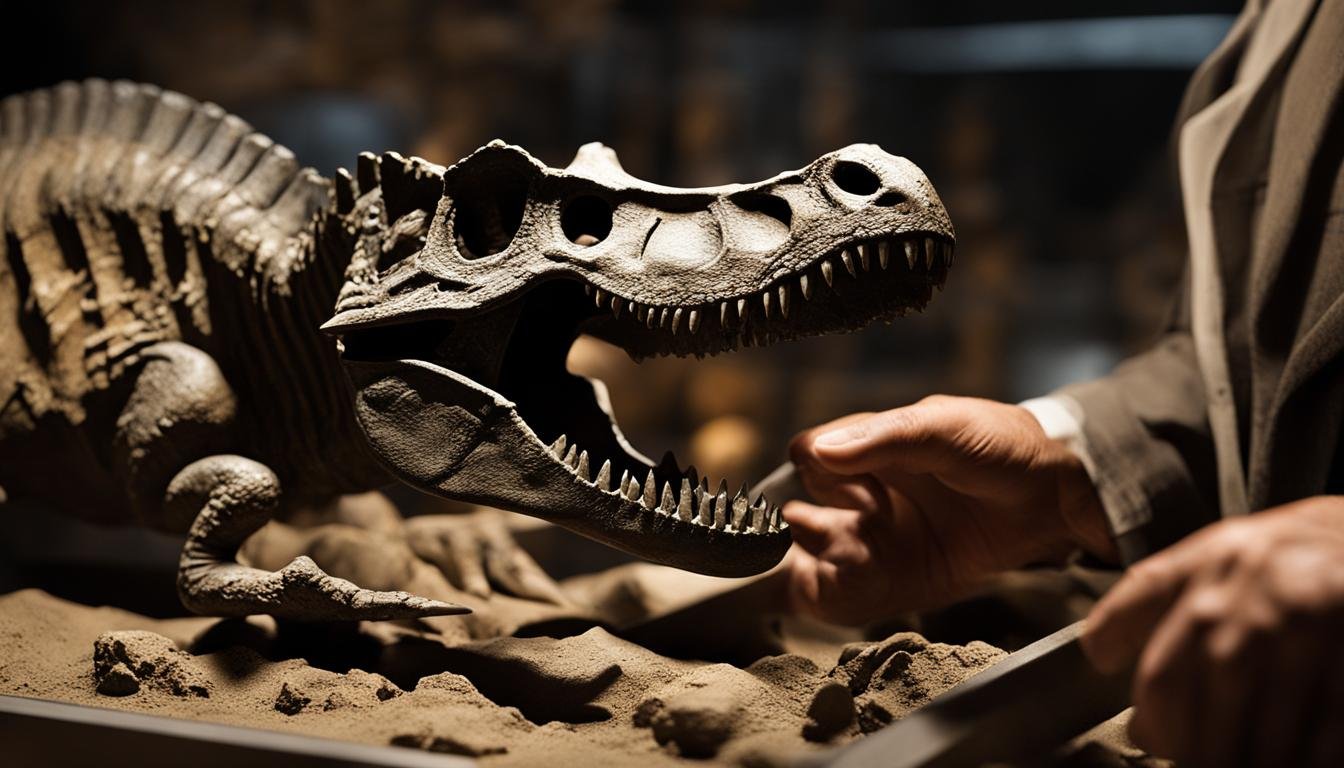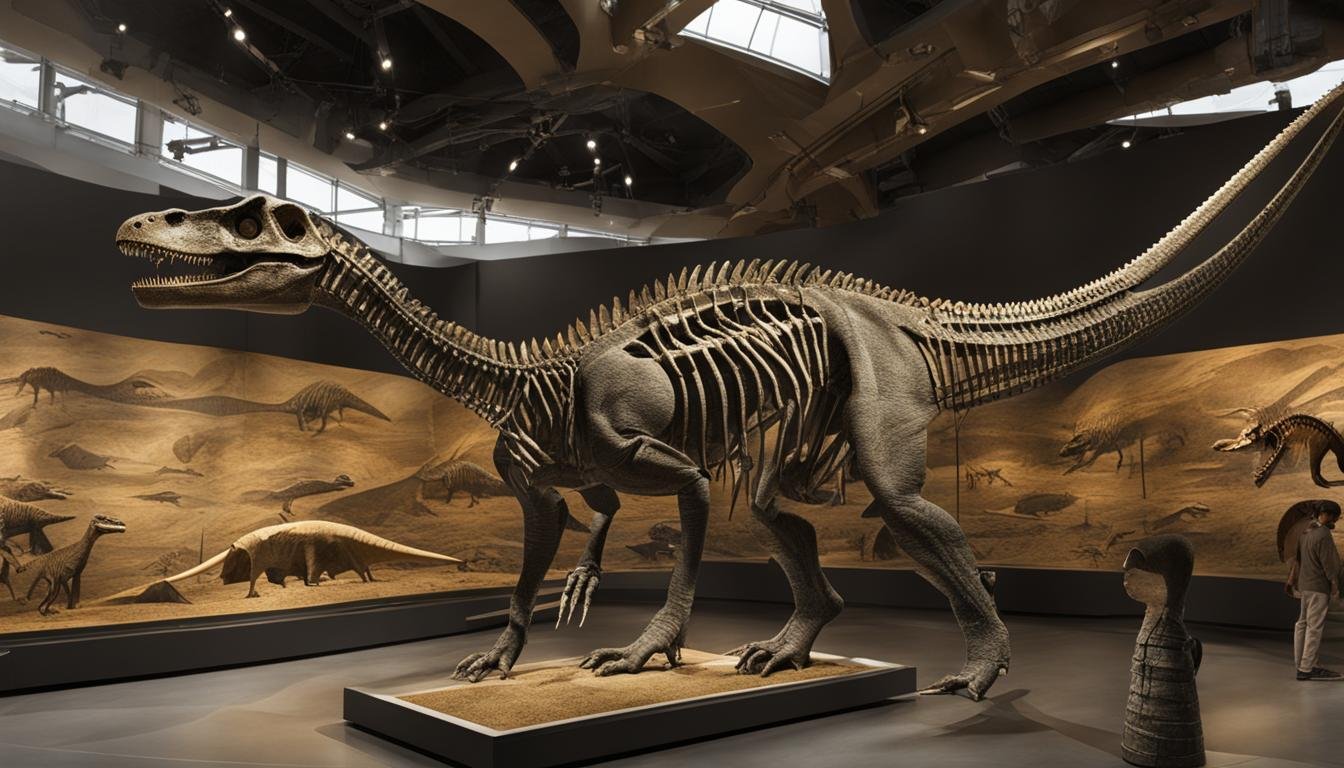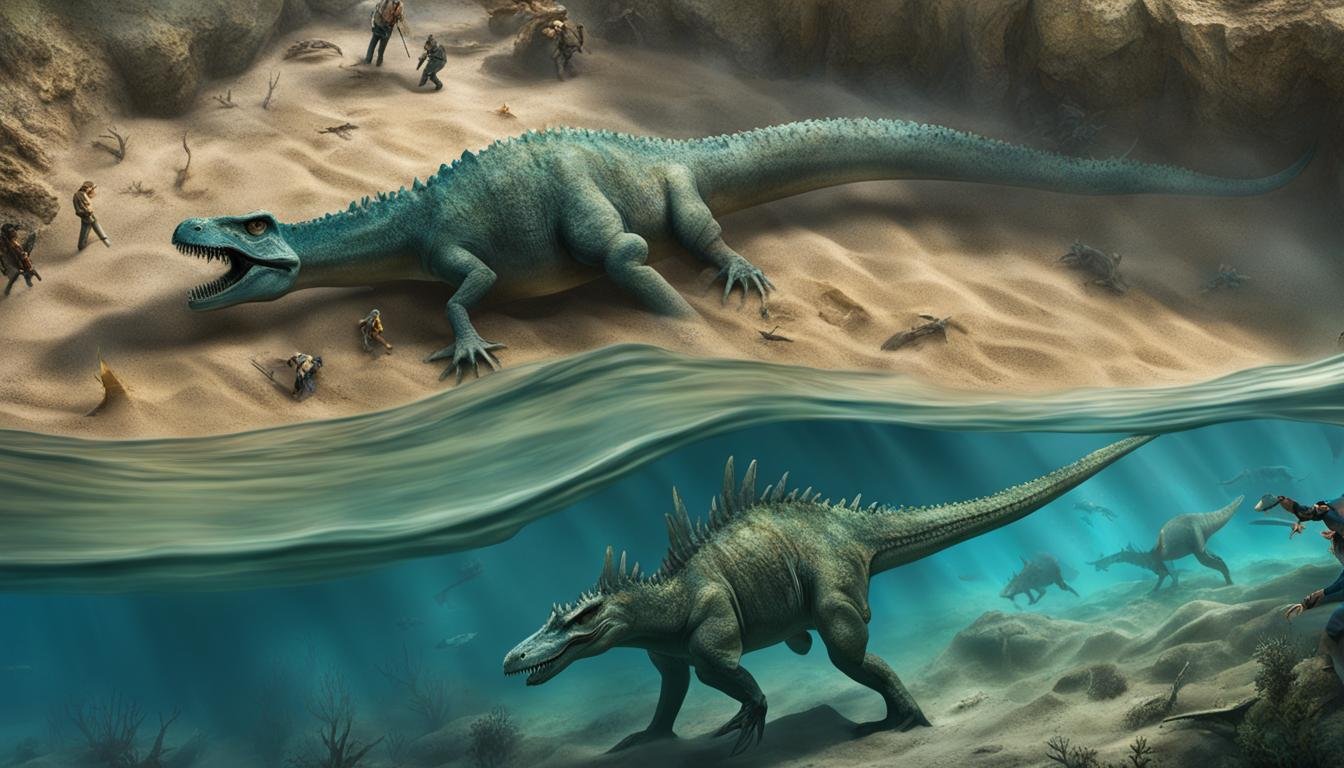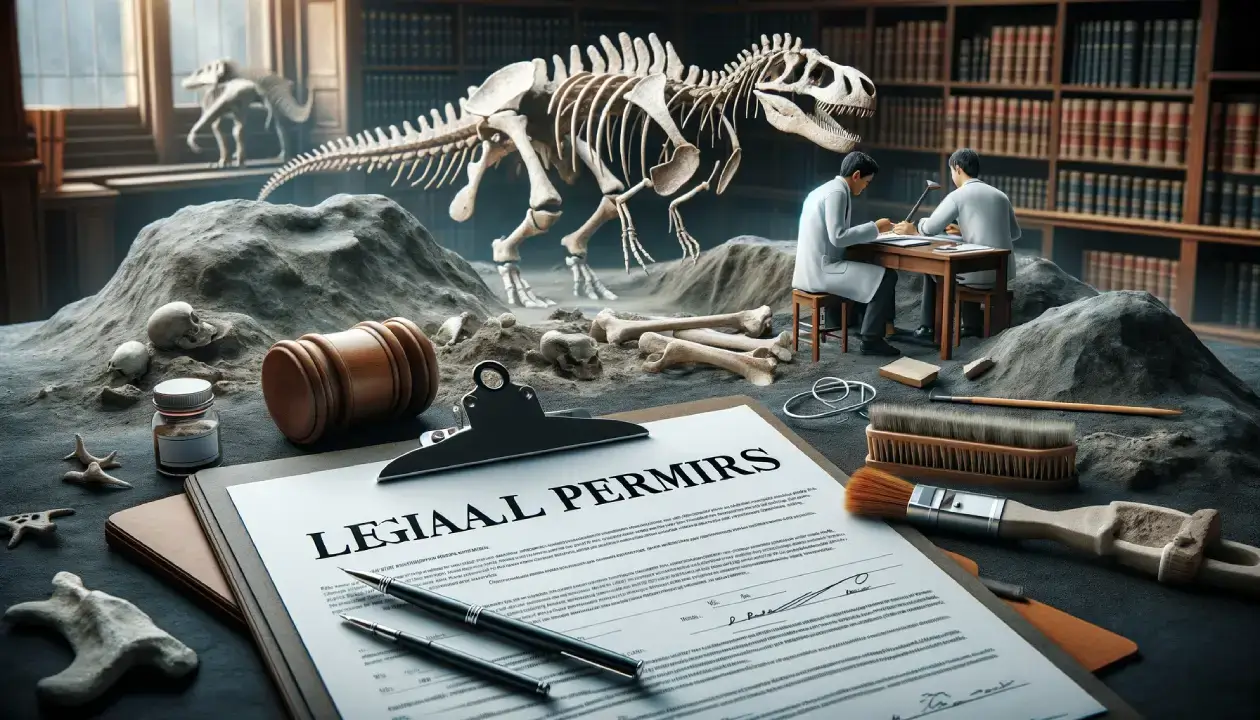In the field of paleontology, there have been instances of dinosaur fossil hoaxes and mistakes that have misled scientists and the public. These errors can range from deliberate forgery of fossils to unintentional misidentification or improper reconstruction. Understanding these hoaxes and mistakes is important for accurate scientific knowledge and the preservation of genuine dinosaur fossils.
| What You’ll Learn | Why It Matters |
|---|---|
| Debunking dinosaur fossil hoaxes is crucial for accurate scientific knowledge. | Ensures scientific integrity and preserves the historical record of dinosaurs. |
| Common mistakes in dinosaur fossils can lead to misconceptions about dinosaur evolution and behavior. | Corrects misunderstandings and guides future research in paleontology. |
| Identifying fake dinosaur fossils requires careful examination and analysis by experts. | Protects the scientific community from false information and misleading conclusions. |
| Ethical fossil collection practices are essential for preserving genuine dinosaur specimens. | Prevents the loss of valuable scientific data and maintains the credibility of paleontological findings. |
| Collaboration between scientists, museums, and local communities helps protect genuine specimens. | Fosters a culture of scientific integrity and community involvement in preserving history. |
The Archaeoraptor Hoax
The Archaeoraptor hoax is one of the most infamous cases in paleontological history. In 1999, National Geographic magazine announced the discovery of a new species, Archaeoraptor liaoningensis, which was believed to be a crucial missing link between dinosaurs and birds. However, it was later revealed that the fossil was a composite made by Chinese farmers, who cleverly combined different fossils to create a fake feathered dinosaur. This scandal drew comparisons to the Piltdown Man hoax, a notorious fossil fraud from 1912.
“The Archaeoraptor hoax was a shocking example of how scientific fraud can deceive even well-respected institutions,” said Dr. Jane Simmons, a paleontologist at the University of Colorado. “It had far-reaching consequences, not only in terms of damaging the reputation of National Geographic, but also in undermining public trust in the authenticity of dinosaur fossils.”
The discovery of Archaeoraptor was initially met with excitement and hailed as a breakthrough in our understanding of dinosaur evolution. However, further analysis by experts revealed inconsistencies in the fossil’s composition, leading to suspicion. The fraudulent nature of the fossil was eventually exposed, highlighting the need for rigorous scrutiny and skepticism in the field of paleontology.
| Dinosaur fossil hoaxes | Year | Consequences |
|---|---|---|
| Archaeoraptor hoax | 1999 | Undermined public trust, damaged National Geographic’s reputation |
| Piltdown Man hoax | 1912 | Remained undiscovered for decades, led to erroneous interpretations of human evolution |
The Archaeoraptor hoax serves as a cautionary tale, reminding scientists and enthusiasts alike to exercise critical thinking and thorough examination when encountering new fossil discoveries. It underscores the importance of peer review, collaboration, and scientific integrity in advancing our knowledge of Earth’s prehistoric past.
Fossil Forgery in China
In the world of paleontology, the issue of fossil forgery has become a major concern, particularly in China. The country, known for its rich fossil deposits, has witnessed an alarming increase in the number of fraudulent dinosaur fossils entering the market. These fake dinosaur fossils are often the result of illegal activities, where impoverished farmers manipulate or fabricate fossils to increase their value.
The illegal fossil trade in China has created a thriving market for fake dinosaur fossils. Impoverished farmers, eager to make a living, may resort to creating composite fossils by piecing together different fossils from various species. In some cases, entirely fake fossils are manufactured, imitating the appearance and characteristics of genuine dinosaur remains. These fraudulent fossils are then sold to dealers and museums, perpetuating the cycle of deception.
The impact of Chinese fossil forgery extends beyond monetary gain. The presence of fake dinosaur fossils in the scientific community disrupts the accuracy of paleontological research, hindering the advancement of knowledge. Misidentified or fabricated fossils can lead to incorrect interpretations of dinosaur evolution and behavior, causing confusion among scientists and the public.
| Effects of Fossil Forgery in China | Examples |
|---|---|
| 1. Misrepresentation of dinosaur species diversity | Creation of new, non-existing species |
| 2. Incorrect understanding of evolutionary relationships | False linkages between different dinosaur groups |
| 3. Disruption of historical and cultural significance | Dilution of genuine Chinese dinosaur heritage |
Efforts to combat fossil forgery in China include increased regulation and stricter enforcement of laws. Additionally, collaborations between paleontologists, museums, and local communities play a vital role in raising awareness about the importance of ethical fossil collection and preserving the integrity of genuine dinosaur fossils.
By addressing the issue of fossil forgery in China, the scientific community can work towards ensuring the authenticity of dinosaur fossils and maintaining the accuracy of paleontological knowledge. Continued vigilance and education are essential in the fight against fraudulent dinosaur fossils, allowing future generations to appreciate and learn from the genuine remnants of Earth’s prehistoric past.
Impact on Scientific Research
Dinosaur fossil hoaxes and mistakes have a significant impact on scientific research and the advancement of knowledge in paleontology. These errors can hinder progress by introducing false information into the field and leading researchers down incorrect paths of inquiry. The presence of fraudulent or misidentified fossils can misguide interpretations of dinosaur evolution and behavior, resulting in inaccurate scientific conclusions. The accuracy and integrity of paleontological knowledge are essential to understanding the history of these ancient creatures and their place in the natural world.
“The accuracy and integrity of paleontological knowledge are essential to understanding the history of these ancient creatures and their place in the natural world.”
When fake or improperly identified fossils are incorporated into museum collections or research studies, it undermines the credibility of scientific findings. Researchers rely on accurate data to formulate theories and draw conclusions about prehistoric life. The presence of fraudulent fossils threatens the validity and reliability of research, creating skepticism and hindering the progress of scientific discovery. It is crucial for the scientific community to work diligently in identifying and exposing dinosaur fossil hoaxes and mistakes to maintain the integrity of the field and ensure the accuracy of scientific knowledge.
Implications for Future Studies
The impact of dinosaur fossil hoaxes and mistakes extends beyond the immediate challenges they pose to existing research. These errors can have far-reaching implications for future studies and the development of new theories and hypotheses. When erroneous information is incorporated into the body of scientific knowledge, it can lead to a perpetuation of false ideas and hinder future advancements in paleontology. Scientists must remain vigilant in their efforts to identify and correct these mistakes, ensuring that future research builds upon a foundation of accurate data and reliable information.

Uncovering the Truth
In the fascinating field of paleontology, it is essential to distinguish between genuine dinosaur fossils and fraudulent ones. Uncovering the truth behind dinosaur fossil hoaxes and mistakes requires a meticulous process of fact-checking and debunking. Paleontologists employ various techniques to expose fraudulent fossils, ensuring the accuracy and integrity of our understanding of prehistoric life.
Fraudulent Fossils Exposed
One of the key methods used in exposing dinosaur fossil hoaxes is the application of advanced imaging technologies. X-rays and scans enable scientists to examine the internal structure of fossils, revealing any signs of manipulation or composite construction. By meticulously analyzing these images, paleontologists can identify discrepancies and inconsistencies that indicate a fraudulent fossil. This process of fact-checking and uncovering the truth ensures that only genuine fossils contribute to our scientific knowledge.
“The careful examination and analysis of dinosaur fossils is crucial in distinguishing the real from the fake.”
Collaborative Efforts and Expertise
Fact-checking dinosaur fossils is a collaborative endeavor involving experts from various institutions and specializations. By pooling their knowledge and expertise, paleontologists can cross-reference findings, share information, and collectively tackle the challenge of uncovering the truth behind alleged dinosaur fossil hoaxes. These collaborative efforts help verify the authenticity of fossils and ensure the accuracy of our understanding of prehistoric creatures.
Preserving Scientific Integrity
The commitment to fact-checking and debunking fraudulent fossils is rooted in the preservation of scientific integrity. It is crucial to distinguish between genuine dinosaur fossils and manipulated or composite specimens to maintain the credibility of paleontological research. By upholding high ethical standards and conducting thorough investigations, scientists protect the integrity of the field, preserving the accurate representation of prehistoric life for future generations.
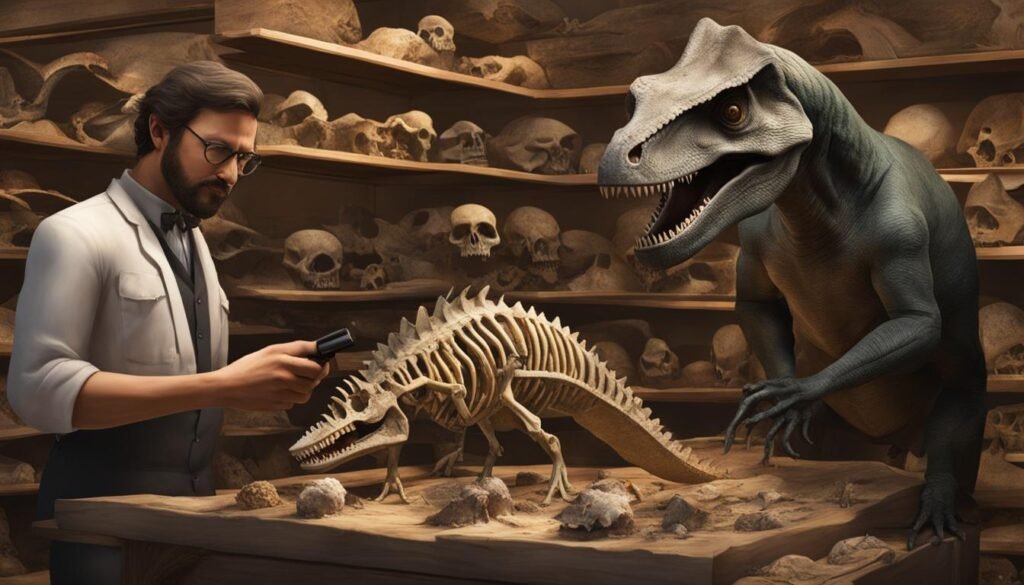
| Species | Location | Authenticity |
|---|---|---|
| Tyrannosaurus rex | Montana, USA | Authentic |
| Archaeoraptor liaoningensis | China | Fraudulent |
| Triceratops | South Dakota, USA | Authentic |
| Stegosaurus | Utah, USA | Authentic |
Preserving Genuine Dinosaur Fossils
Preserving genuine dinosaur fossils is crucial for the advancement of paleontology and the integrity of scientific knowledge. It is essential to protect these invaluable artifacts from being lost, damaged, or misrepresented. Ethical fossil collection practices play a vital role in maintaining the scientific integrity of the field, ensuring accurate research outcomes, and promoting a deeper understanding of prehistoric life.
When it comes to protecting dinosaur fossils, ethical considerations are paramount. Proper excavation techniques must be employed to minimize the risk of damaging or destroying fossils during the excavation process. This includes meticulous documentation of the surrounding geological context, which provides crucial information for understanding the fossil’s significance and its relationship to its environment.
Adherence to legal regulations is also critical in preserving genuine dinosaur fossils. Laws and regulations are in place to prevent illegal excavation, smuggling, and unauthorized trade of fossils, which can contribute to the proliferation of fake dinosaur fossils and the loss of scientifically valuable specimens. Collaboration between researchers, museums, and local communities is essential to enforce these regulations and combat the illegal fossil trade.
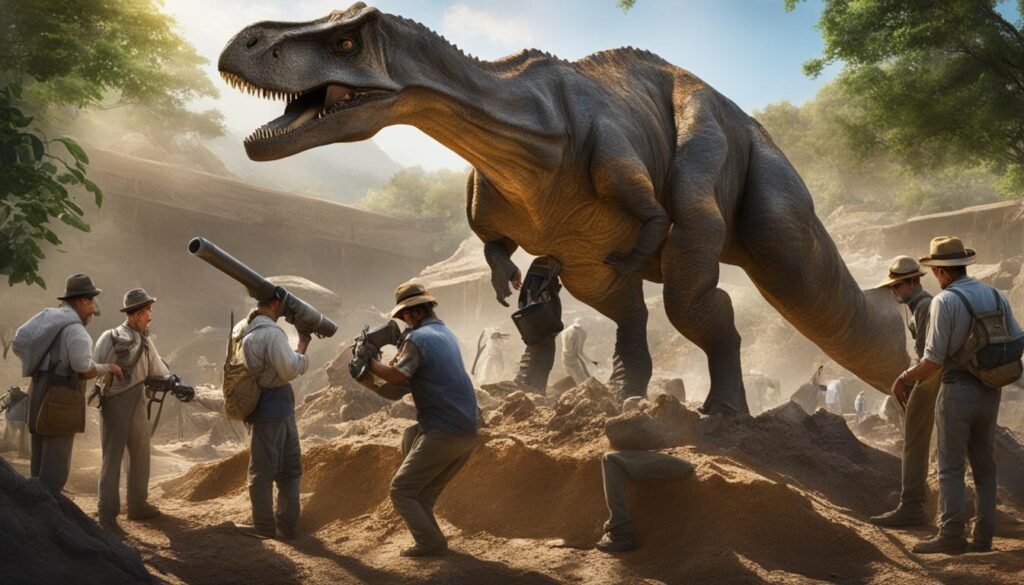
Furthermore, promoting scientific integrity and ethical fossil collection practices requires transparency and accountability. By sharing research findings, methodologies, and data openly, the scientific community can foster a culture of collaboration and knowledge sharing, ensuring that accurate information and best practices are accessible to all. This transparency also facilitates fact-checking and peer review, which are integral to maintaining the credibility of scientific research.
In conclusion, preserving genuine dinosaur fossils is not only about protecting these remarkable artifacts but also about upholding the values of scientific integrity and responsible research. Through ethical fossil collection practices, adherence to legal regulations, and collaboration within the scientific community, we can ensure the preservation of genuine specimens and promote accurate and comprehensive knowledge of Earth’s prehistoric inhabitants.
Conclusion
In conclusion, the existence of dinosaur fossil hoaxes and mistakes has posed challenges to the field of paleontology. These instances range from deliberate fraud to unintentional errors in identification and reconstruction. It is crucial for scientists and the public alike to be aware of these issues in order to maintain accurate paleontological knowledge and preserve genuine dinosaur fossils.
Despite the setbacks caused by fraudulent and misidentified fossils, there are ways to uncover the truth. Through careful examination and collaboration, paleontologists can expose fake fossils and ensure the integrity of scientific findings. Techniques such as x-rays, scans, and comparative morphology play a vital role in this process, allowing experts to identify composite fossils and signs of manipulation.
Preserving genuine dinosaur fossils is of utmost importance. Ethical fossil collection practices, including proper excavation techniques, accurate documentation, and adherence to legal regulations, are essential in maintaining the scientific integrity of the field. By working together, scientists, museums, and local communities can prevent the circulation of fake fossils and protect the value of authentic specimens.
While dinosaur fossil hoaxes and mistakes present challenges, they also serve as reminders for critical thinking and fact-checking within paleontology. Learning from past mistakes, researchers can strive to discover and preserve genuine dinosaur fossils, contributing to a comprehensive and accurate understanding of Earth’s prehistoric inhabitants.

